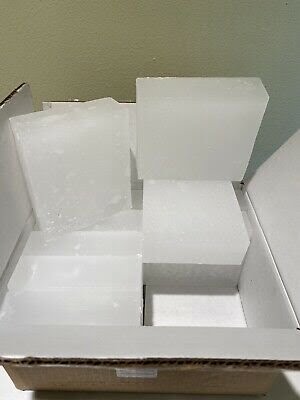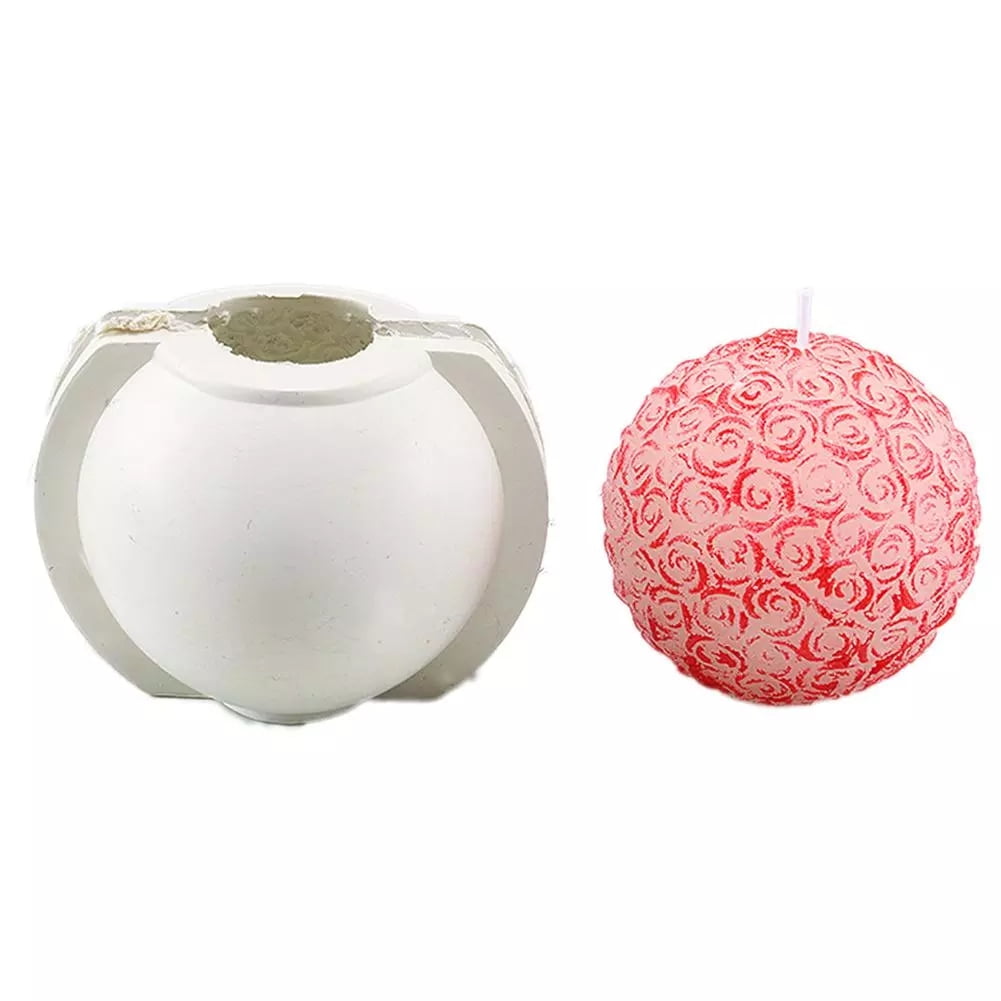Candle making is not only a popular hobby but also a profitable business venture for many entrepreneurs. However, in order to truly succeed in this industry, it is crucial to understand the importance of profit margin. Profit margin refers to the amount of profit a business makes on each candle sold, and it plays a vital role in determining the overall success and sustainability of a candle making business.
In this article, we will delve into the world of candle making and explore why understanding profit margin is essential for both seasoned candle makers and newcomers. We will start by providing a brief overview of the basics of candle making, highlighting the various techniques and materials involved in crafting these beautiful creations.
Next, we will guide you through step-by-step instructions on how to calculate profit margin specifically tailored for candle makers. By breaking down the process into manageable increments, we aim to equip you with the knowledge necessary to accurately assess your profitability.
Furthermore, we will examine several key factors that can significantly impact profit margin in candle making, such as market demand, pricing strategies, and production costs. By understanding these factors, you can make informed decisions that maximize your profits without compromising on quality.
Join us as we explore the fascinating world of candle making and uncover innovative ideas and tips to increase your profit margin. Whether you are an aspiring entrepreneur or an experienced candle maker looking to enhance your profitability, this article aims to provide you with valuable insights that can propel your business towards success.
The Basics of Candle Making
Candle making is a popular hobby and a profitable business venture for many individuals. Before diving into the intricacies of calculating profit margins and implementing pricing strategies, it is essential to have a solid understanding of the basics of candle making. This section will provide a brief overview of the process, materials, and techniques involved in candle making.
The first step in candle making is gathering the necessary ingredients and materials. The key components include wax, wicks, fragrance oils or essential oils, colorants, and containers or molds. Different types of wax can be used, such as soy wax, beeswax, or paraffin wax, each with its own unique properties and benefits. Wicks can be made from natural fibers like cotton or wood.
Once all the materials are gathered, the next step is melting the wax. This can be done using a double boiler or by using a specialized wax melter. While melting the wax, fragrance oils and colorants can be added to create scented and colored candles. Once melted and well-mixed, the liquid wax is poured into containers or molds with pre-inserted wicks.
After pouring the wax into containers or molds, it needs to cool down and solidify completely before use. This typically takes several hours or overnight depending on the size of the candle. Finally, trimming the wick to an appropriate length before lighting ensures optimal burning and safety.
Candle making allows for creativity in terms of choosing different shapes, sizes, scents, colors, and decorations for candles. Whether it’s simple pillar candles or intricate sculptural ones, artisans have endless possibilities to explore and experiment with their creations.
Having a solid foundation of knowledge about candle making sets the stage for success in achieving high-quality products that customers will love. With this basic overview in mind, candle makers can now move forward to understanding profitability calculations and adopting effective pricing strategies that will help maximize their profit margins.
Calculating Profit Margin
Calculating the profit margin is a crucial step for candle makers to gauge the financial performance of their business. It provides valuable insights into how efficiently the business is generating profits and can help identify areas that may need improvement. Here is a step-by-step guide for candle makers on how to calculate the profit margin:
- Determine Revenue: The first step in calculating profit margin is to determine the total revenue generated from candle sales. This includes both direct sales to customers and any other sources of income related to your candle making business, such as wholesale orders or online marketplaces.
- Calculate Cost of Goods Sold (COGS): Next, you need to calculate the cost of goods sold, which includes all the costs directly associated with producing each candle. This typically includes materials, packaging, labeling, and any direct labor costs involved in the production process.
- Subtract COGS from Revenue: Once you have determined the revenue and cost of goods sold, subtract the COGS from the revenue to calculate the gross profit. This represents the amount of money left after deducting the direct costs of producing each candle.
- Calculate Operating Expenses: In addition to COGS, operating expenses such as rent, utilities, marketing expenses, and administrative costs should be taken into account. It’s important to track all these expenses accurately and allocate them proportionally across your candles’ total units produced.
- Deduct Operating Expenses from Gross Profit: To calculate net profit, subtract operating expenses from gross profit. Net profit represents the final amount left after deducting all expenses associated with running the candle making business.
- Calculate Profit Margin: Finally, divide net profit by revenue and multiply by 100 to get the profit margin percentage. A higher profit margin indicates that your business is generating more profits relative to its revenue.
| Revenue | $10,000 |
|---|---|
| Cost of Goods Sold (COGS) | $6,000 |
| Gross Profit (Revenue – COGS) | $4,000 |
| Operating Expenses | $2,500 |
| Net Profit (Gross Profit – Operating Expenses) | $1,500 |
Using the data from the example above, let’s calculate the profit margin:
Profit Margin = (Net Profit / Revenue) * 100.
Profit Margin = ($1,500 / $10,000) * 100.
Profit Margin = 15%.
In this example, the candle maker has a profit margin of 15%. This percentage represents the amount of profit earned per dollar of revenue generated. Tracking and calculating profit margins regularly can help candle makers make informed business decisions and optimize their pricing and cost strategies to increase profitability.
Key Factors Affecting Profit Margin in Candle Making
Profit margin is a crucial aspect of any business, including candle making. To maximize profit and ensure the success of your candle making venture, it is important to understand the key factors that can affect your profit margin. By identifying and taking these factors into account, you can make informed decisions to optimize your profitability.
One crucial factor that affects profit margin in candle making is the cost of raw materials. The quality and type of wax, wicks, fragrance oils, and other materials used can greatly vary in price. It is essential to carefully source these materials while considering both quality and cost. Finding affordable suppliers or negotiating bulk discounts can significantly impact your profit margins.
Another factor to consider is overhead costs. These costs include rent for workspace or store space, utilities, equipment maintenance, packaging supplies, marketing expenses, and salaries if you have employees. Monitoring and controlling these costs are critical to maintaining a healthy profit margin. Regularly reviewing your expenses and finding ways to reduce them without compromising on quality can help enhance profitability.
Additionally, pricing strategy plays a major role in determining profit margins. Determining the right selling price for your candles involves several considerations including market demand, competition analysis, product uniqueness or differentiation, perceived value by customers, and target customer segment. Pricing too low may result in lower profit margins while pricing too high may discourage sales. Striking the right balance is key to maximizing profit margin without compromising on quality.
Considering these key factors will enable candle makers to navigate their business with a focus on achieving optimal profit margins. By carefully managing the cost of raw materials, overhead expenses, and pricing strategies, candle makers can find success in this competitive industry.
| Key Factors | Affected Profit Margin |
|---|---|
| Cost of Raw Materials | Quality and cost of wax, wicks, fragrance oils, etc. |
| Overhead Costs | Rent, utilities, equipment maintenance, marketing expenses |
| Pricing Strategy | Determining the right selling price based on market demand and competition analysis |
Cost Analysis
When it comes to running a successful candle making business, understanding the breakdown of expenses is crucial for calculating and maximizing profit margin. By analyzing costs associated with production, materials, overhead, and other factors, candle makers can make informed decisions that can positively impact their profit margins.
Production Costs
One of the first components to consider in cost analysis is the production costs. This includes the cost of wax, wicks, fragrance oils, dyes, and other materials used to create candles. It is essential for candle makers to keep track of these expenses accurately. By monitoring the cost trends of raw materials over time and exploring potential bulk discounts from suppliers, candle makers can find ways to minimize production costs without compromising on quality.
Overhead Costs
In addition to production costs, overhead costs play a significant role in determining profit margins. These include expenses such as rent for workspace or retail space if applicable, utilities like electricity and water bills, packaging materials like boxes and labels, marketing expenses, insurance fees, and any other operational expenses incurred by the business. Analyzing these costs is essential for understanding how they impact the overall profitability of the candle making business.
Other Factors Affecting Costs
Apart from direct production and overhead costs, there are several other factors that can influence overall expenses in a candle making business. For example:
- Quality Control: Ensuring that each batch of candles meets high-quality standards might involve additional testing equipment or inspection processes.
- Labor Costs: If there are employees involved in the candle making process or running the day-to-day operations of the business, their wages or salaries need to be factored into cost analysis.
- Inventory Management: Proper inventory management is crucial to avoid wastage or spoilage of raw materials or finished products. Monitoring inventory levels and optimizing ordering processes can help reduce costs and improve profitability.
By thoroughly analyzing these component costs, candle makers can gain a comprehensive understanding of the expenses involved in their business. This analysis sets the foundation for determining an appropriate pricing strategy that maximizes profit margins without sacrificing quality.
Pricing Strategies
When it comes to maximizing profit margin in the candle making business, finding the right pricing strategy is crucial. It is essential to strike a balance between setting prices that are attractive to customers while still allowing for a healthy profit margin. A well-thought-out pricing strategy can help candle makers increase their profitability without compromising on the quality of their products.
One effective pricing strategy for candle makers is value-based pricing. This approach involves determining the perceived value of your candles and setting prices accordingly. By understanding what sets your candles apart from competitors and emphasizing their unique qualities, you can justify higher prices and increase your profit margin. For example, if your candles are made from all-natural ingredients or have a luxurious fragrance blend, customers may be willing to pay a premium price for these added benefits.
Another pricing strategy to consider is cost-plus pricing. With this method, you calculate the total cost of producing each candle and then add a percentage markup to cover overhead expenses and generate profits. While cost-plus pricing may not take into account market demand or competitors’ prices, it ensures that all costs are accounted for and allows you to determine an appropriate selling price based on desired profit margins.
Dynamic pricing is another innovative strategy that some candle makers employ. This approach involves adjusting prices based on factors such as consumer demand, seasonal trends, or product scarcity. By regularly monitoring market conditions and making timely adjustments to prices, candle makers can adapt to changes in customer preferences and maximize profitability during peak times.
Increasing Profit Margin
As a candle maker, finding ways to increase your profit margin is essential for the long-term success and growth of your business. Fortunately, there are several innovative ideas and tips that can help you achieve this goal.
1. Expand Your Product Range: One way to boost your profit margin is by expanding your product range. In addition to traditional candles, consider offering specialty or custom-made candles that cater to specific customer preferences or occasions. This can attract a wider customer base and potentially command higher prices, resulting in increased profits.
2. Develop Unique Packaging: Investing in unique and visually appealing packaging can make your candles stand out from the competition and justify premium pricing. Consider using sustainable materials or incorporating personalized elements that align with your brand identity. Remember, packaging plays a crucial role in attracting customers and maintaining their loyalty.
3. Offer Customization Options: Providing customization options allows customers to personalize their candles according to their preferences, making them an ideal gift or keepsake item. Offering customizable scents, colors, container shapes, or even engraved labels can significantly enhance the perceived value of your products and justify higher price points.
4. Explore Collaborations: Partnering with other local businesses or artisans can be a mutually beneficial strategy for increasing profit margins. For instance, collaborating with a local artist to create limited-edition candle designs can generate buzz and attract customers who appreciate unique craftsmanship.
5. Social Media Marketing: Leveraging social media platforms is crucial for reaching a wider audience and increasing sales potential. By regularly posting engaging content such as behind-the-scenes glimpses of the candle-making process, tutorials, or customer testimonials, you can build brand awareness and loyalty while driving traffic to your online store or physical location.
Remember, increasing profit margin requires continuous innovation, experimentation, and adaptation to changing market trends and customer demands. By implementing these ideas and tips into your candle making business strategy, you can differentiate yourself from competitors while maximizing profitability.
Examples of Successful Candle Making Businesses with High Profit Margins
When it comes to running a successful candle making business, achieving a high profit margin is of utmost importance. Profit margin is the percentage of revenue that remains as profit after all expenses have been deducted. It serves as an indicator of a company’s financial health and can determine its sustainability and growth potential. In this section, we will explore some examples of successful candle making businesses that have managed to achieve high profit margins.
1. ABC Candles: ABC Candles is a well-known brand in the candle making industry that has consistently maintained a high profit margin. One of the strategies that has contributed to their success is their focus on niche markets. By targeting specific customer segments with unique and high-quality candles, they are able to charge premium prices which significantly increase their profit margin.
2. XYZ Candle Co.: XYZ Candle Co. has built its reputation on producing environmentally friendly and sustainable candles. They use organic ingredients and non-toxic materials in their manufacturing process, allowing them to position themselves as an eco-conscious brand. This commitment to sustainability resonates with customers who are willing to pay a higher price for their products, resulting in a healthy profit margin for the company.
3. PQR Scented Candles: PQR Scented Candles differentiates itself by offering personalized candle options for customers. They allow customers to choose from various scents, designs, and even customize labels with personal messages or branding. This customization adds value to their products and enables them to command higher prices, leading to an impressive profit margin.
These examples highlight some key strategies employed by successful candle making businesses to achieve high profit margins. By focusing on unique selling propositions, such as niche markets, sustainability efforts, or customization options, these businesses are able to attract customers willing to pay more for their products.
Case Study
One of the best ways to understand the concept of profit margin in candle making is through a real-life case study. In this section, we will explore an example of a successful candle making business and analyze its profit margin. By examining this case study, we can gain valuable insights into the factors that contribute to a high profit margin in the industry.
The Business: Sunny Scents Candle Co.
Let’s take a closer look at Sunny Scents Candle Co., a small business that specializes in handmade scented candles. Established five years ago by entrepreneur Lisa Thompson, Sunny Scents Candle Co. has quickly gained popularity for its high-quality products and unique fragrances. Lisa started the business as a passion project but soon realized its potential for profitability.
Profit Margin Analysis
To analyze the profit margin of Sunny Scents Candle Co., we need to consider both revenue and expenses. Over the past year, the company generated $100,000 in total revenue from candle sales. However, it incurred various costs to produce and sell those candles.
The cost breakdown includes raw materials such as wax, wicks, fragrance oils, packaging materials, and labels. Additionally, there are overhead expenses like rent for the workshop space, equipment maintenance costs, utilities, marketing expenses, and employee wages.
After deducting all these costs from the total revenue, Sunny Scents Candle Co. had $60,000 left as net income before taxes. To calculate the profit margin percentage for the company’s candle making operations over this period using this information: (Net Income / Total Revenue) x 100 = Profit Margin Percentage.
In this case, it would be ($60,000 / $100,000) x 100 = 60%. This means that Sunny Scents Candle Co.’s profit margin for their candle making business was 60%.
Through this analysis of Sunny Scents Candle Co., we can see that despite the expenses involved in running a candle making business, it is possible to achieve a high profit margin through efficient cost management and effective pricing strategies. This case study serves as an inspiration for other candle makers looking to improve their profit margins and build successful businesses in this industry.
Conclusion
In conclusion, understanding and effectively managing profit margin is crucial for candle makers in order to run a successful and profitable business. Throughout this article, we have discussed the basics of candle making, step-by-step guides on calculating profit margin, key factors that affect profit margin, cost analysis breakdowns, pricing strategies to maximize profitability without compromising quality, innovative ideas to increase profit margin, and examples of successful candle making businesses with high profit margins.
One of the key takeaways from this article is the importance of accurately calculating profit margin. By carefully analyzing costs and setting appropriate prices for your candles, you can ensure that you are not only covering expenses but also generating healthy profits. It is essential to consider various factors such as raw material costs, labor expenses, overhead costs, packaging costs, and marketing expenses when calculating profit margin.
Moreover, it is crucial for candle makers to constantly innovate and find unique ways to increase their profit margins. This could include exploring new markets or niches, developing new product lines or scents that cater to customer preferences, implementing cost-saving measures without compromising quality, and effectively marketing and branding your candles to attract more customers.
In conclusion, by understanding the importance of profit margin and implementing effective strategies to maximize profitability in candle making business owners can achieve long-term success. By carefully considering all aspects including cost analysis and pricing strategies while constantly seeking innovation opportunities will ensure that your candle making business thrives in an increasingly competitive market.

Welcome to my candle making blog! In this blog, I will be sharing my tips and tricks for making candles. I will also be sharing some of my favorite recipes.





